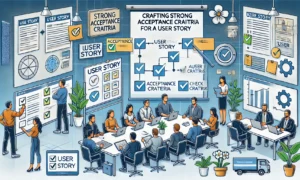Introduction
Product management is a dynamic and rewarding career path that can offer a variety of growth opportunities. Whether you’re just starting out or looking to advance in your career, understanding the typical product management career ladder is essential. The progression from entry-level roles to senior leadership positions involves not just gaining experience but also developing specific skills and leadership capabilities.
In this article, we’ll explore the typical career ladder for product managers, the key skills required at each stage, and how you can position yourself for success in your career.
The Product Management Career Ladder: From Entry-Level to Executive
The product management career ladder is often divided into several key stages, each representing a higher level of responsibility, expertise, and influence within an organization. Here’s a breakdown of the typical career progression for a product manager:
1. Associate Product Manager (APM)
Entry-Level Position
As an Associate Product Manager (APM), you’ll be learning the ropes of product management. At this stage, you’re often tasked with smaller projects and are responsible for supporting senior product managers in executing the product roadmap. The role focuses on understanding the product lifecycle, conducting market research, and gaining hands-on experience with product development processes.
- Key Responsibilities:
- Assist in defining product requirements.
- Collaborate with engineering, design, and marketing teams.
- Conduct user research and gather feedback.
- Analyze data to inform product decisions.
- Key Skills:
- Communication and collaboration.
- Basic data analysis and reporting.
- Understanding of agile methodologies.
- Problem-solving skills.
- Typical Duration: 1-2 years.
2. Product Manager (PM)
Mid-Level Position
Once you gain more experience, you’ll progress to a Product Manager (PM) role. Here, you take ownership of product features or entire product lines. You will lead cross-functional teams, define product strategies, prioritize features based on customer needs and business objectives, and work closely with senior leadership to align product goals with company vision.
- Key Responsibilities:
- Own a product or product feature from concept to launch.
- Define the product roadmap and prioritize initiatives.
- Coordinate with cross-functional teams (engineering, design, marketing).
- Use data to assess product performance and make improvements.
- Key Skills:
- Product strategy development.
- Stakeholder management and communication.
- Advanced data analysis and A/B testing.
- Strong decision-making abilities.
- Typical Duration: 2-4 years.
3. Senior Product Manager (Sr. PM)
Senior-Level Position
A Senior Product Manager is responsible for a larger set of products or a product portfolio. In this role, you’ll not only lead product teams but also mentor junior PMs and ensure that the product vision aligns with long-term business goals. You will likely have a more significant influence on the product roadmap and drive initiatives that have a direct impact on the company’s bottom line.
- Key Responsibilities:
- Define long-term product strategy and vision.
- Manage multiple product lines or an entire product portfolio.
- Lead product discovery and ideation sessions.
- Drive product launches and optimize features post-launch.
- Mentor and guide junior product managers.
- Key Skills:
- Leadership and team management.
- Strategic thinking and long-term planning.
- Deep market and competitive analysis.
- Expertise in product lifecycle management.
- Typical Duration: 3-5 years.
4. Lead Product Manager / Principal Product Manager
Advanced Senior Position
As a Lead or Principal Product Manager, you’ll play a crucial role in guiding product direction and strategy at a higher level. You’ll work closely with executive leadership to ensure product initiatives align with company goals and business strategies. At this stage, you may lead a team of product managers and influence decisions that shape the overall product vision for the company.
- Key Responsibilities:
- Lead large-scale, high-impact product initiatives.
- Shape the overall product strategy for the company or a specific product category.
- Mentor and manage teams of PMs, providing guidance on complex product decisions.
- Work directly with executives to align product goals with business objectives.
- Key Skills:
- Cross-functional leadership and executive communication.
- Expertise in scaling products and teams.
- High-level business acumen.
- Strong ability to influence stakeholders and lead without authority.
- Typical Duration: 4-6 years.
5. Director of Product Management
Leadership Role
A Director of Product Management is a strategic leader within the product organization, overseeing multiple product teams and driving the overall product strategy. In this role, you’ll focus on aligning product initiatives with business goals at a company-wide level, making decisions that impact the entire product portfolio. Directors often collaborate with other departments, including marketing, sales, and customer support, to ensure product success.
- Key Responsibilities:
- Oversee and manage multiple product teams or an entire product department.
- Drive the product vision and roadmap at the organizational level.
- Work closely with senior leadership and other departments to ensure product success.
- Lead large-scale product initiatives that drive significant business impact.
- Key Skills:
- Organizational leadership and team development.
- Strong understanding of business and financials.
- Deep experience in product strategy, planning, and execution.
- Conflict resolution and decision-making at the executive level.
- Typical Duration: 5-8 years.
6. Vice President (VP) of Product Management
Executive-Level Role
The VP of Product Management is an executive-level role responsible for the entire product function within a company. You will set the strategic direction for the company’s product portfolio, collaborate with other executives to ensure alignment with corporate objectives, and manage a large team of product managers, directors, and senior product leaders.
- Key Responsibilities:
- Lead the product vision and strategy across the organization.
- Ensure cross-functional alignment between product, engineering, sales, and marketing.
- Oversee the execution of large-scale product initiatives that drive business growth.
- Manage a team of senior product leaders and PMs, fostering growth and development.
- Key Skills:
- Executive leadership and strategic vision.
- Deep understanding of market trends and business operations.
- Proven ability to manage and scale large product organizations.
- Advanced financial and operational acumen.
- Typical Duration: 8-12 years.
7. Chief Product Officer (CPO)
Top Leadership Role
As the Chief Product Officer (CPO), you’re at the pinnacle of the product management career ladder. You’ll be responsible for driving the company’s product strategy at the highest level, ensuring that all product decisions are aligned with overall business goals. The CPO is often part of the executive leadership team and plays a key role in shaping the company’s future through innovative product strategies.
- Key Responsibilities:
- Set and drive the overall product strategy for the company.
- Work with other C-level executives to align product goals with corporate vision.
- Lead product innovation and ensure product teams deliver customer-focused solutions.
- Represent the company’s product vision to investors, customers, and partners.
- Key Skills:
- Executive leadership and vision.
- Expertise in managing a diverse product portfolio.
- Ability to drive company-wide innovation and transformation.
- Extensive experience in managing large product organizations.
- Typical Duration: 12+ years.
Key Skills for Advancing Through the Product Management Career Ladder
While each stage of the product management career ladder requires unique skills and experience, certain core competencies remain essential at every level:
- Communication: As you move up, your ability to communicate product vision, strategy, and outcomes to various stakeholders becomes more important.
- Leadership: Whether you’re leading a small team or an entire product organization, strong leadership and mentoring skills are essential for growth.
- Strategic Thinking: The ability to see the big picture, align product initiatives with business goals, and adapt to market changes is vital at every stage.
- Data-Driven Decision Making: At all levels, using data to inform product decisions and measuring success is critical to driving results.
Adaptability: The tech and product management landscape is ever-changing. Being adaptable and open to learning new tools, processes, and methodologies will keep you competitive.



